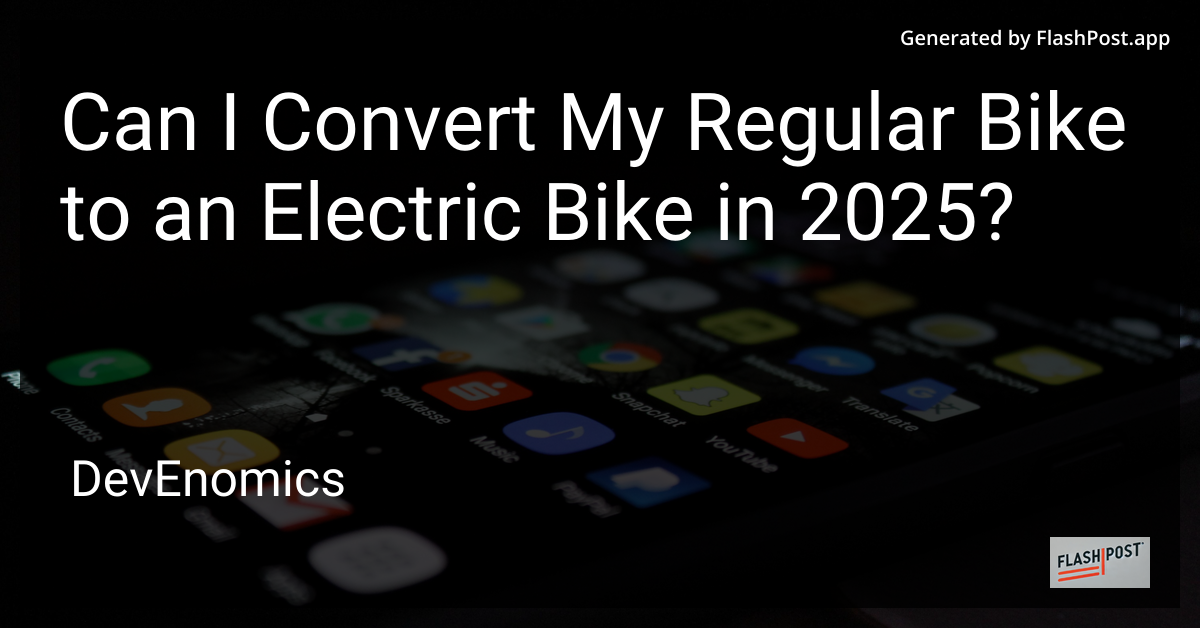

Can I Convert My Regular Bike to an Electric Bike in 2025?
The question “Can I convert my regular bike to an electric bike in 2025?” is becoming increasingly common as more cyclists look to the benefits of electric mobility. With the advancements in technology and the growing demand for eco-friendly transportation, converting your traditional bicycle to an electric one is not only possible but also practical.
Why Convert a Regular Bike to an Electric Bike?
Before delving into the conversion process, let’s explore why you might want to convert your regular bike:
-
Cost-Effectiveness: Purchasing a new electric bike can be expensive. By converting your existing bike, you can save a significant amount of money.
-
Eco-Friendly: Electric bikes produce zero emissions, making them an environmentally friendly transportation option.
-
Health Benefits: You can choose the level of pedal assistance, allowing you to get a workout while still having help on challenging terrains.
-
Convenience for Daily Commuting: Electric bikes allow you to commute without breaking a sweat, making them ideal for work commutes or running errands.
-
Versatility: Converting your bike allows you to retain the familiarity and comfort of your current setup, only adding more power.
Steps to Convert Your Regular Bike to an Electric Bike
Here’s a step-by-step guide to converting your bicycle into an electric bike:
1. Choose the Right Electric Bike Conversion Kit
The first step is selecting a conversion kit. Kits generally include a motorized wheel, battery, and other necessary components. Here are the main types:
-
Front Hub Motor Kits: These kits replace the front wheel and are relatively easy to install.
-
Rear Hub Motor Kits: These replace the rear wheel and often provide better traction than front hub kits.
-
Mid-Drive Kits: Mounted at the bike’s crankset, mid-drive kits typically offer the best balance but can be more complicated to install.
2. Consider the Battery Options
The battery is the powerhouse of your electric bike. When choosing a battery, consider:
-
Capacity: Measured in watt-hours (Wh); higher capacity means longer riding distances.
-
Placement: Options include frame-mounted, rear rack, or integrated within the bike frame.
3. Installation Process
Once you’ve selected your kit and battery, you’ll need to follow the manufacturer’s instructions to install the components. Installation generally involves:
- Replacing the wheel(s)
- Mounting the battery
- Connecting the motor to the battery and controller
- Installing the throttle or pedal-assist sensor
4. Optimize for Performance
After installation, it’s important to test and adjust the settings for optimal performance and safety.
5. Regular Maintenance
Once your bike is converted, regular maintenance is key to improve battery longevity and ensure smooth performance. To learn more about taking care of your new electric bike during harsh seasons, read this guide about women’s electric bikes in winter.
Considerations Before Converting
-
Budget: Determine whether converting is the most cost-efficient option for you. Check out some cheap electric bikes under $200 for comparison.
-
Local Regulations: Be aware of local laws concerning electric bikes and ensure your converted bike complies.
-
Riding Techniques: Your bike’s dynamics will change once it’s converted, especially in handling and braking. Hone your skills by following some expert riding techniques for electric bikes.
Converting your regular bike to an electric one in 2025 remains a feasible and attractive option, especially given the advancements in technology. With the right kit and careful installation, you can enjoy the benefits of an electric bike without the hefty price tag.
